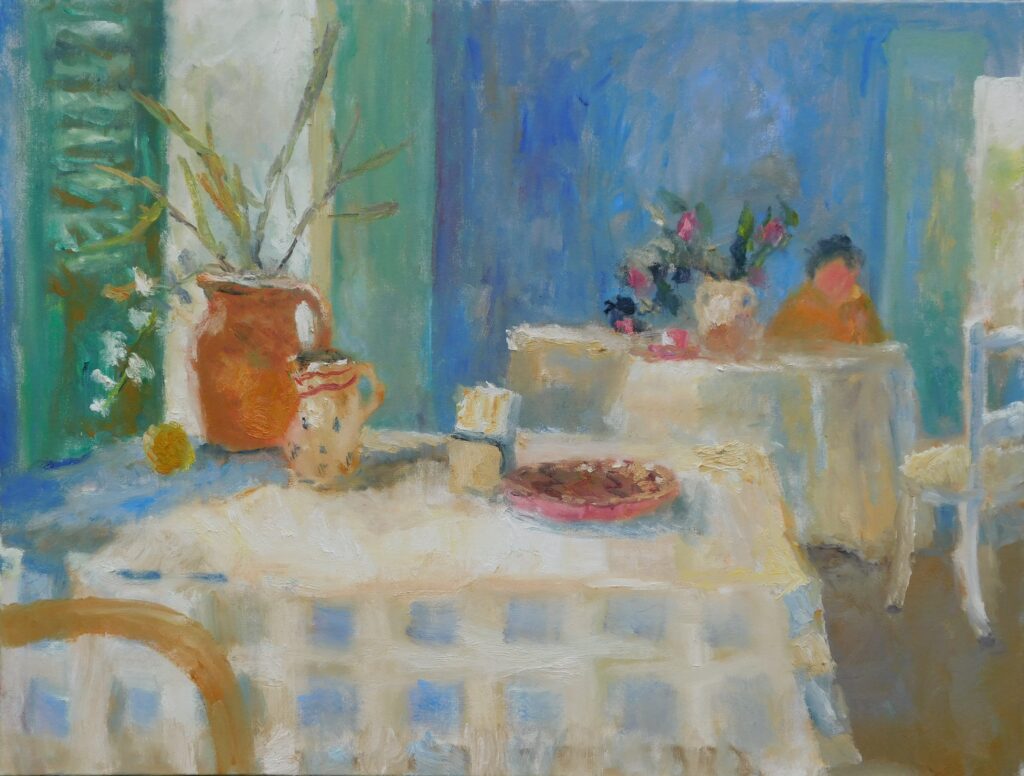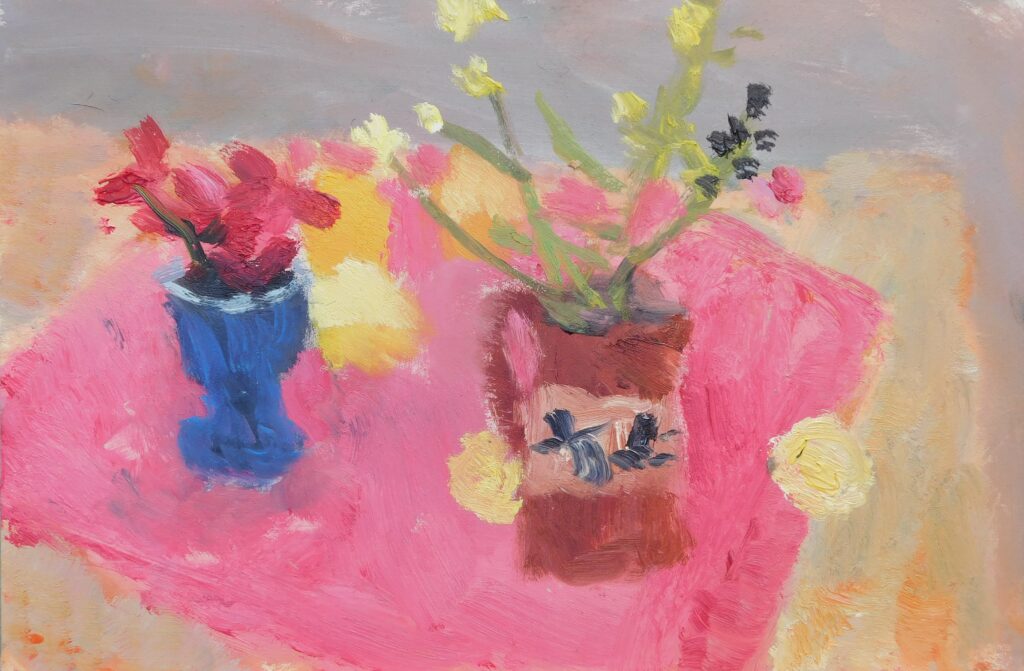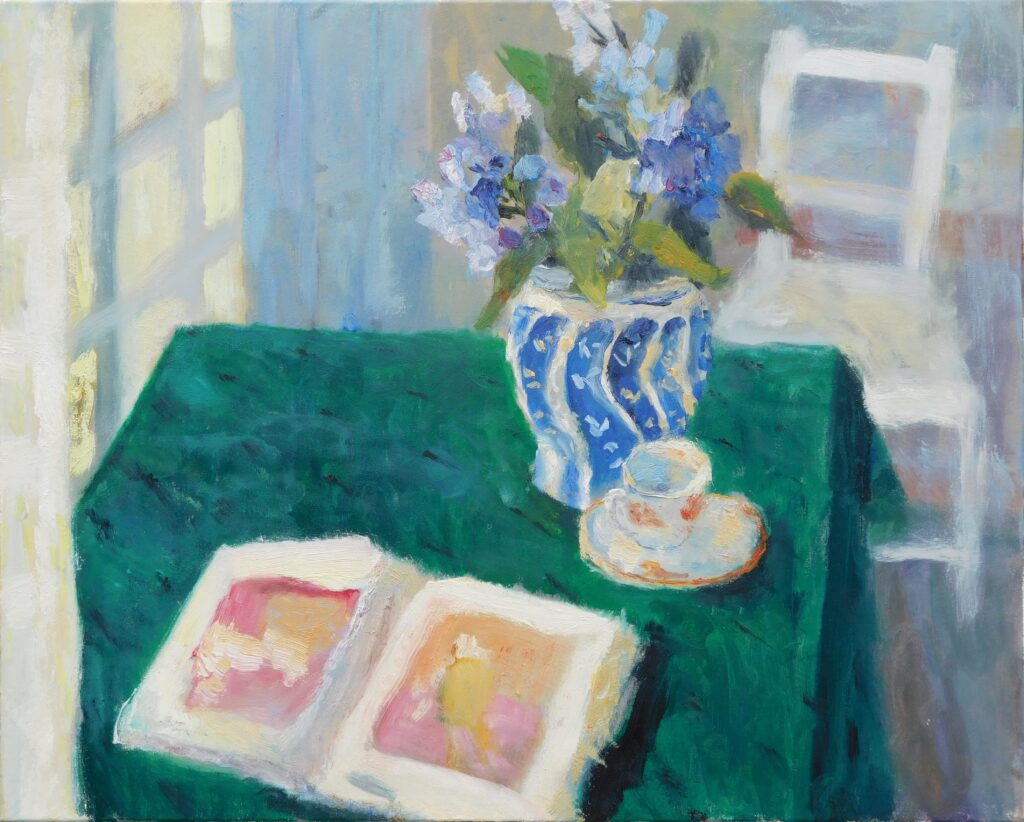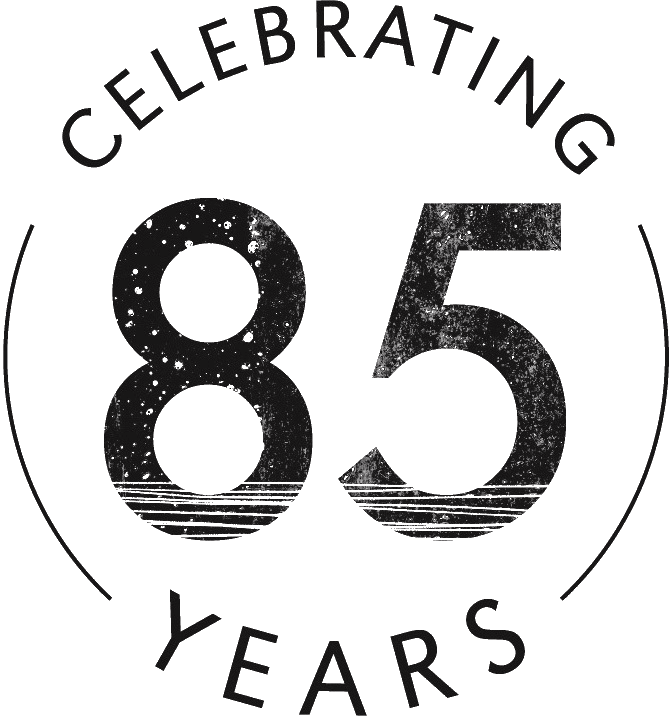This website uses cookies so that we can provide you with the best user experience possible. Cookie information is stored in your browser and performs functions such as recognising you when you return to our website and helping our team to understand which sections of the website you find most interesting and useful.
Course details
Do you sometimes wonder why a composition works in some paintings and not so well in others? Join Alice Mumford to investigate the common themes that underpin paintings from different eras in Western Art and how this can help your work.

This new online course looks at key elements of composition such as how we navigate or enter and exit a painting. Alice will share the ideas that she uses in her own painting practice to solve practical problems and resolve a painting, ultimately teaching you to become a better ‘looker’ and a better ‘painter’.
Over the duration of the course you will be working through pre-recorded video footage of Alice demonstrating her concepts and bringing her ideas to life in front of the camera. You can watch, absorb and complete practical tasks and there will be an opportunity to ask questions in real time, when Alice joins us live for a Q and A session on the 28th June.
Throughout the course you will be encouraged to do your own research into artists and paintings and experiment using whatever you have to hand, i.e., paper and glue, charcoal and paint to help develop your own understanding of composition.
A summary of the key eight themes explored in the course:
Static and Movement – How to identify powerful symmetry, naturalism, and mini dramas, how the eye “pairs up”
Spatial Tension – What is spatial tension, when does and doesn’t it work and how is it used in figurative and non-figurative paintings?
Triangles – How do you create the reassuring feeling of gravity in a painting and why would you want to?
Golden Section – Why has the golden section been of such influence on Western art forms throughout history, how to work out where the golden section is and how to make use of it
Romantic Landscapes – How attitudes and ideas about nature have influenced compositions in landscape painting, from the formal garden to rewilding, how to use the classical zigzag to enter and take the view around a landscape, why our relationship to the land has changed the way we depict landscapes
Breaking the Fourth Wall – How the fourth wall is used in paintings, how a mirror can provide a means of experimenting with the fourth wall
Top Trumps – How painters tackle large complex paintings where lots of things are going on and how they direct the viewer, how artists use different hierarchies, a bit like playing Top Trumps!, how to compose using light and line
Lost Horizons – Why the invention of perspective changed the way we respond emotionally to a painting, to try and draw emotionally and forget the horizon.
BONUS
Two Q&A sessions:
Recording: Watch Alice respond to students and see if your fellow students had the same questions as you.
LIVE: Join in on 28th June and ask your own questions direct to Alice



Who is this course for?
This course is suitable for anyone with an interest in art. It will be useful for those who would like to get more out of their visits to galleries or for artists looking to improve their understanding of how to successfully compose pictures.
What will I learn?
1. A better understanding of composition
2. How to avoid composition clangers
3. How to alter paintings that don’t work
4. How to create harmony in your art work
5. How composition underpins an art work helping you read paintings with more confidence.
How does an online course work?
Upon purchase, the course will be available to view in your account. To help you get the most out of this course, we will automatically release the lessons a week apart, which will give you time to watch the lessons, carry out your own research and prepare for the next. The pre-recorded classes are on average 45 minutes long and the Q&A sessions an hour.
You will be invited to join our Facebook Alumni group so you can share your discoveries with fellow students from around the world. You can also share your work live with others on social media using the #schoolofpainting and tagging us @stives painting
You can watch on demand, as often as you like, for up to 180 days after the start of the course. You can watch on a PC, laptop or tablet and if you have chromecast or miracast you could even cast to your SmartTV from your phone.
Taught by
What to Bring
A list of materials will be available to see in your account upon purchase of the course. If there are any pre-course tasks to complete before the session they can be found here too along with any handouts and reference material relevant to the course.
You will need access to the internet and ideally a PC, laptop or a tablet with audio.
Timings and Breaks
Watch now at your leisure with plenty of opportunity to watch again as often as you like and let the ideas percolate.
1hr Live Broadcast Interview/Q&A: Friday 28th June 16:30hrs
You can revisit as often as you like for up to 180 days after the start of the course.
What our students say
I looked forward to the lessons each week. I also enjoyed that Alice illustrates the points with her own art work, including real-time demonstrations, as well as showing examples from other artists . I really learnt a lot from her.
I always enjoy Alice’s presentations, she got a lovely warm and natural way about her. The content for each topic was generous and and well given. Inspiring and insightful overall. The course has been very helpful and I’m using what I learnt in my own paintings. I feel it’s improved my artwork.
This class was something I looked forward to each week and it never disappointed. When the summer’s over and the nights are long, I will definitely take this course all over again before it expires.
Firstly Alice’s natural, entertaining, thoughtful and enthusiastic presentation. This made it one of the best on line courses I have ever watched. The wide scope of material made it so educational for me – now in my 70’s and having not ever studied art. It encouraged me to learn more and to think about composition in new ways. So helpful.
I just loved it.
All of it!
1. Alice taking us through artworks in search of composition approaches she wished to highlight each week
2. Demonstrating her thoughts using paper/paint
3. I loved when she brought her own work in, showing how she might solve a particular composition challenge she saw in her painting
4. So helpful to have an “assignment” each week to apply a lesson
5. I loved Alice’s engaging lessons and appreciate her generosity as a tutor
FAQs
Online Broadcast
How can I get help in choosing a course?
Our friendly expert staff are always happy to discuss your needs and our courses in more detail to help you with your decision. Please call us on 01736 797180
Do I need a webcam/any equipment?
For our webinar sessions which are broadcast on the internet and no webcam or microphone is needed as you just need to be able to see/hear hosts and you can communicate using the chat function. You can watch using a PC, Smart TV or tablet. A phone isn’t ideal as you will struggle to see enough unless you can miracast to a screen or smart TV.
For the longer online courses on Zoom you will need a laptop or tablet with audio and camera enabled so you can have a screen near where you are working. If you have a PC without camera or speakers, you can purchase a plug and play webcam for approx £25 which connects to a usb port. You will also need reasonable broadband connection and speed.
All the art materials and equipment needed to participate in the course will be listed in full on the online learning platform, for live webinars this will be a minimum of two weeks before the session starts.
I have registered for the webinar but I can't find my joining link
You can access all the resources and joining link for your webinar via our online learning platform. You will need to have set up an account on our online learning platform in advance. You can do this during the checkout process when purchasing your webinar. If you are having trouble accessing your online account, please contact [email protected]. You can use a PC or tablet or even cast from your phone to watch on your Smart TV.
I paid for the session but missed it, how can I watch?
Currently all our online sessions are recorded and you can access the recording on our online learning platform until it expires. Usually 60 days for a webinar, 90 – 180 days for multipart webinars or online courses.
Studio Courses
How can I get help in choosing a course?
Our friendly expert staff are always happy to discuss your needs and our courses in more detail to help you with your decision. Please call us on 01736 797180
How do I get my work home?
Tutors have special techniques for transporting oil paintings and the school has plastic folders available in our shop for £3.50 or do bring a portfolio.
For international students we are happy to arrange transportation of your work back home.
What do I need to bring?
Absolutely nothing! All materials and aprons are provided although some people do like to bring their own set of brushes.
What do I do for lunch?
Courses allow an hour’s break for lunch and there are numerous places nearby or you are welcome to bring a packed lunch into the studio.
What times do courses run?
Most of our courses start at 10am and end at 4.30pm on the first day. Subsequent days we start at 9.30am ending at 4pm.
Weekend Courses run 10am – 4pm on the first day but the final day starts at 9.30 and ends at 3.30 with a short lunch break to enable people to get home that evening.
Do you have to be experienced to come to the School?
The School is a very friendly and welcoming place for all ages and experience. Our drop-in life classes and August half-day workshops are ideal for those wanting to have a go for the first time. Most of our longer courses are also fine for novices.
If any of the courses do need a bit of experience we flag this up in the brochure and on the website.
Booking a Course
How can I reserve a place?
We will hold a provisional reservation for 24 hours if you give us a call whilst you find accommodation. Otherwise please book online or by telephone 01736 797180.
You can reserve a place with a £100 deposit; balance is due 12 weeks before course start date.
About St Ives
Where do I park?
The nearest long stay public car parks are the Island and Barnoon Long Stay Car Park, both a 5 minute walk away. In the peak summer months it may be easier to park at Trenwith Car Park by the leisure centre and walk down into town. If you don’t fancy the walk up the hill at the end of the day there is a shuttle bus which runs from outside the cinema.
How do I get there?
Public Transport: If you are coming from further afield the main train line runs into St Erth which is a 15 min taxi ride away or you can take the St Ives Bay Line which runs approx. every 30 minutes. The School is a 10 minute walk from St Ives station.
Driving: M5 will take you to Exeter where we recommend that you take the A30 across Bodmin Moor and into Cornwall. After passing Hayle, leave the A30 at St Erth roundabout for St Ives. Turn right at the second roundabout. This road will take you through Lelant and Carbis Bay into St Ives.
Where can I stay?
St Ives has a huge selection of hotels, guest houses and self catering accommodation to choose from. Please browse the art holidays St Ives section on our website and give us a call if you would like any help.

